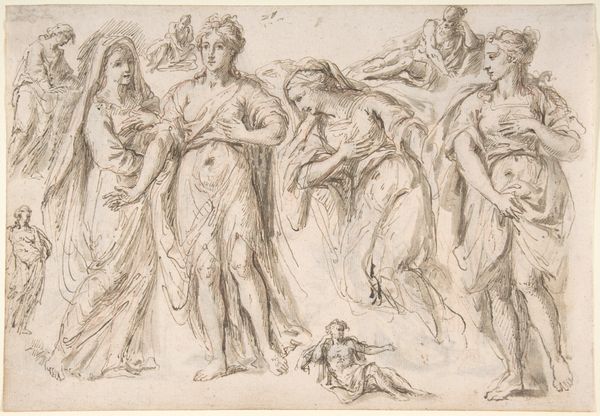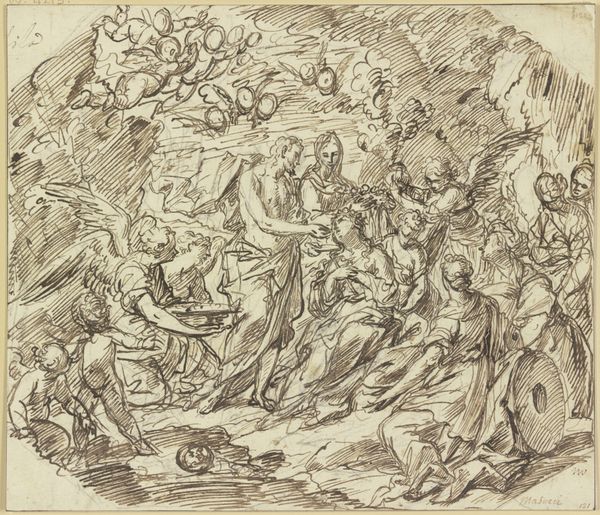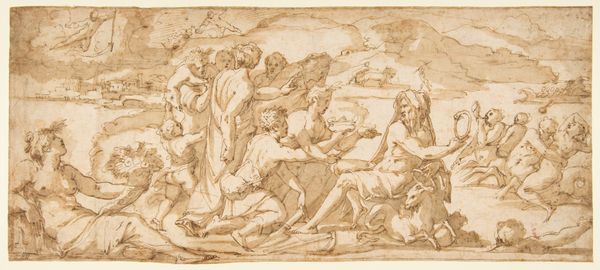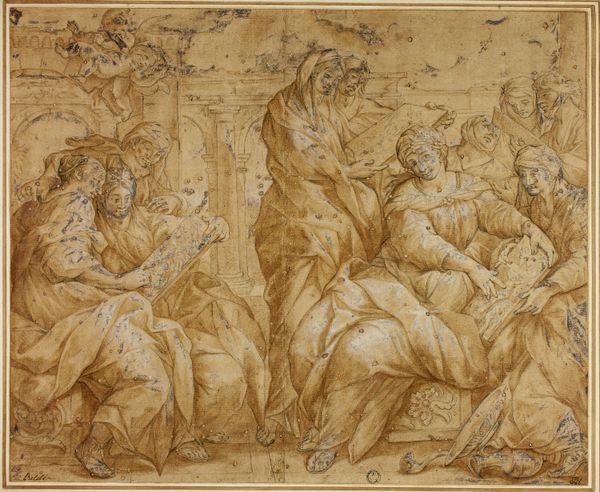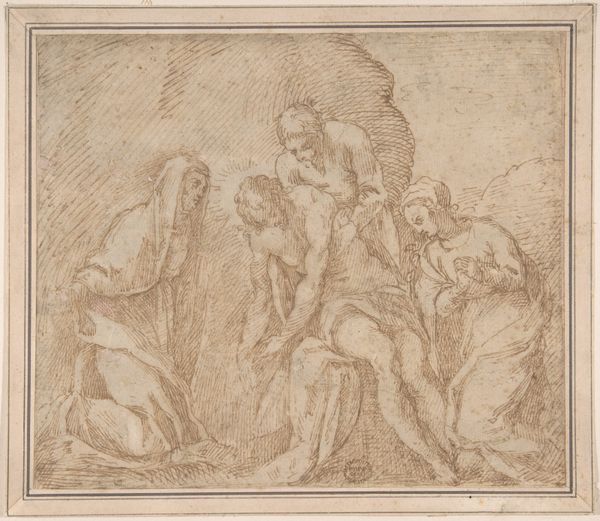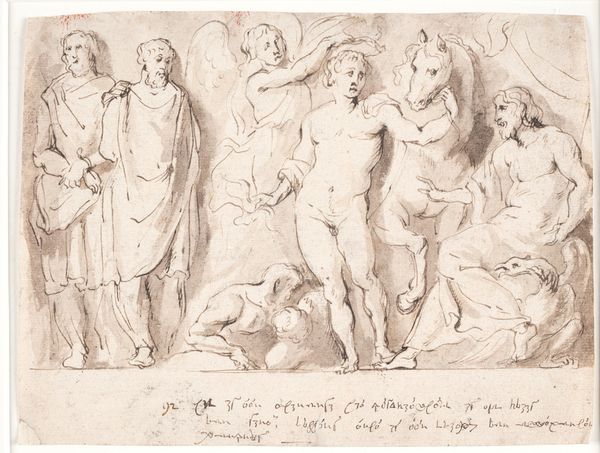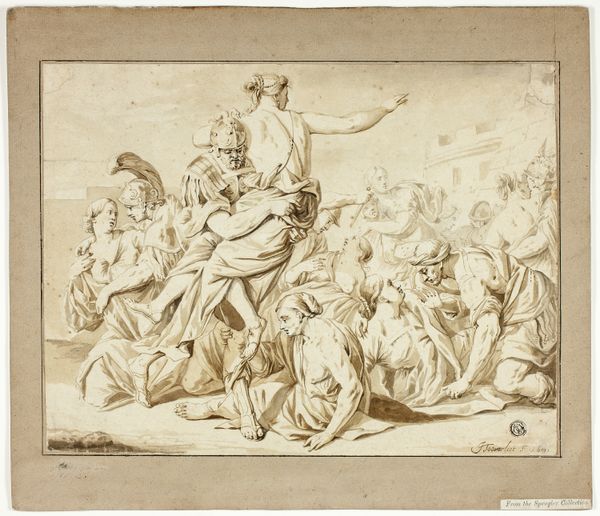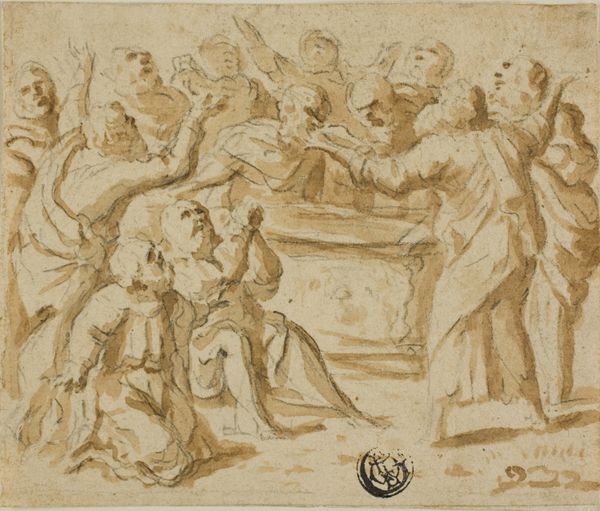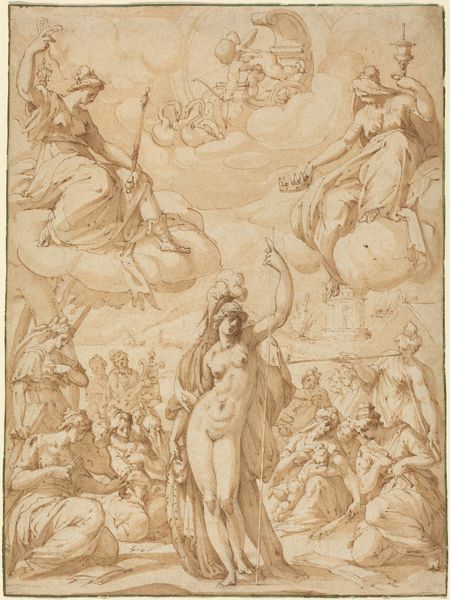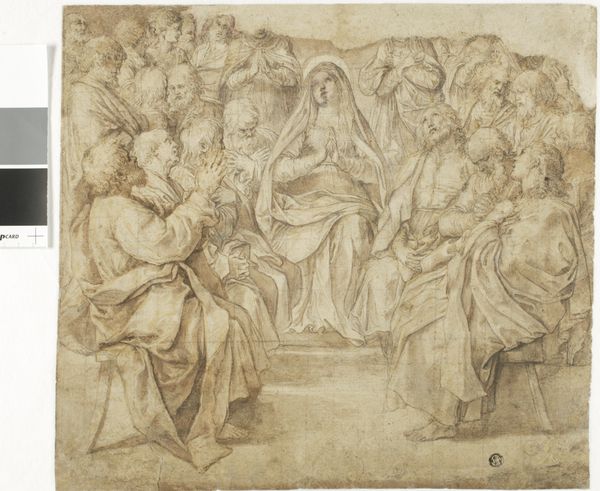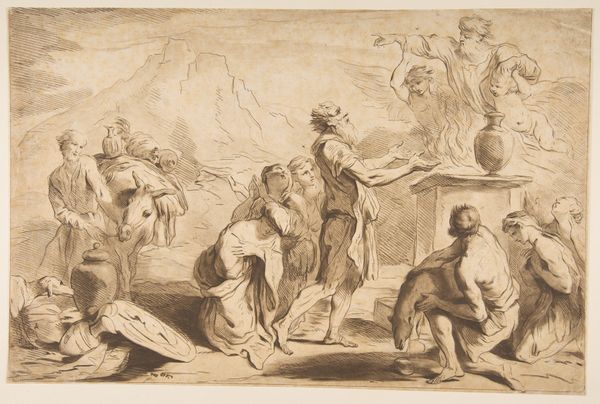
drawing, ink, chalk
#
drawing
#
narrative-art
#
baroque
#
ink painting
#
etching
#
figuration
#
ink
#
chalk
#
history-painting
Copyright: Public Domain
Palma il Giovane created this pen and brown ink drawing titled 'Christus und die Ehebrecherin' at an unknown date. It offers a glimpse into the 16th-century Italian perceptions of morality, gender, and power. In this rendition of the biblical scene, we see not just a depiction of the encounter between Christ and the adulteress, but also a snapshot of the social hierarchies of the time. The accusing men, cloaked in their righteous indignation, stand in stark contrast to the woman kneeling before Christ, her posture conveying humility. The male gaze, laden with judgment, is palpable. Yet, in Christ's calm demeanor, there is a sense of alternative justice, of a space for mercy within a world of harsh moral codes. Consider the emotional weight of the scene: the fear of judgment, the hope for redemption, and the quiet defiance of grace. It serves as a reminder of the complexities inherent in the relationship between societal norms, individual experiences, and the possibility of change.
Comments
stadelmuseum almost 2 years ago
⋮
These three sheets inv. nos. 4229 Z to 4231 Z are part of a series of drawings executed in 1623. To this day, the extent of the series as well as its function have remained a mystery. Palma focussed chiefly on the figures, reducing the spatial setting to a minimum. On all three sheets, the bodies have been recorded with simple pen strokes which are frequently interrupted but confident nonetheless. The drawings are not likely to have been conceived either as studies for paintings or in preparation for an etching series. What remains is the impression that Palma intended to produce an independent cycle using the drawing medium.
Join the conversation
Join millions of artists and users on Artera today and experience the ultimate creative platform.
